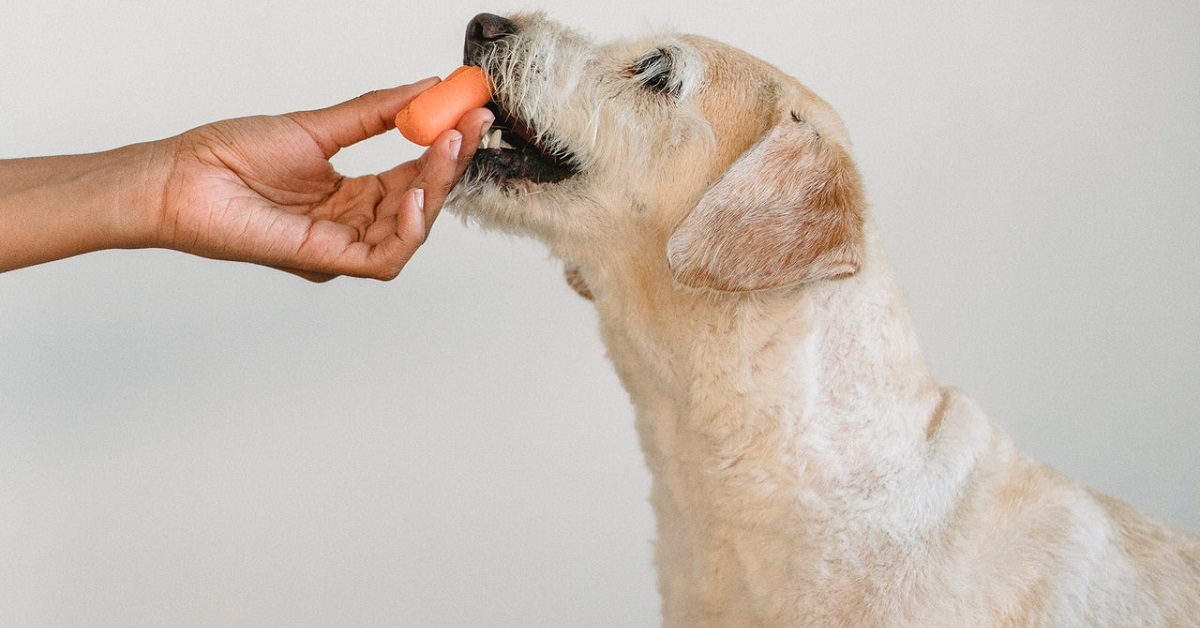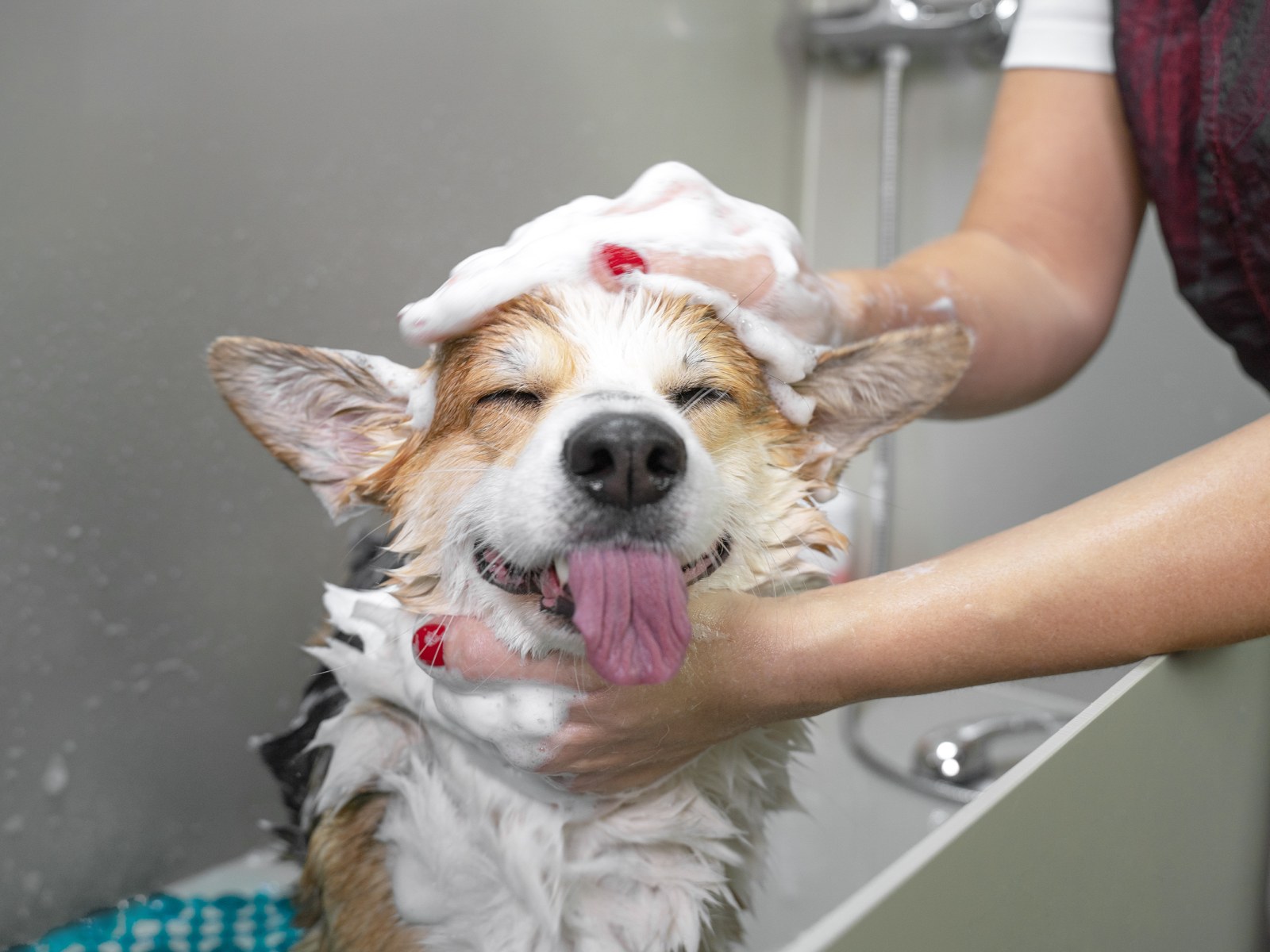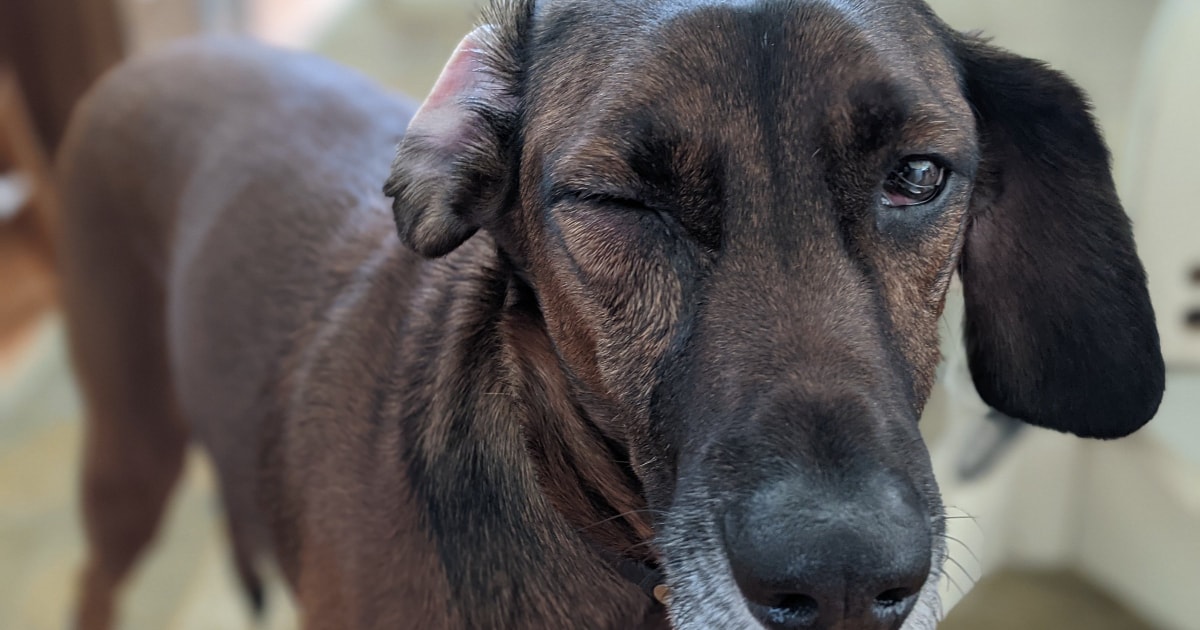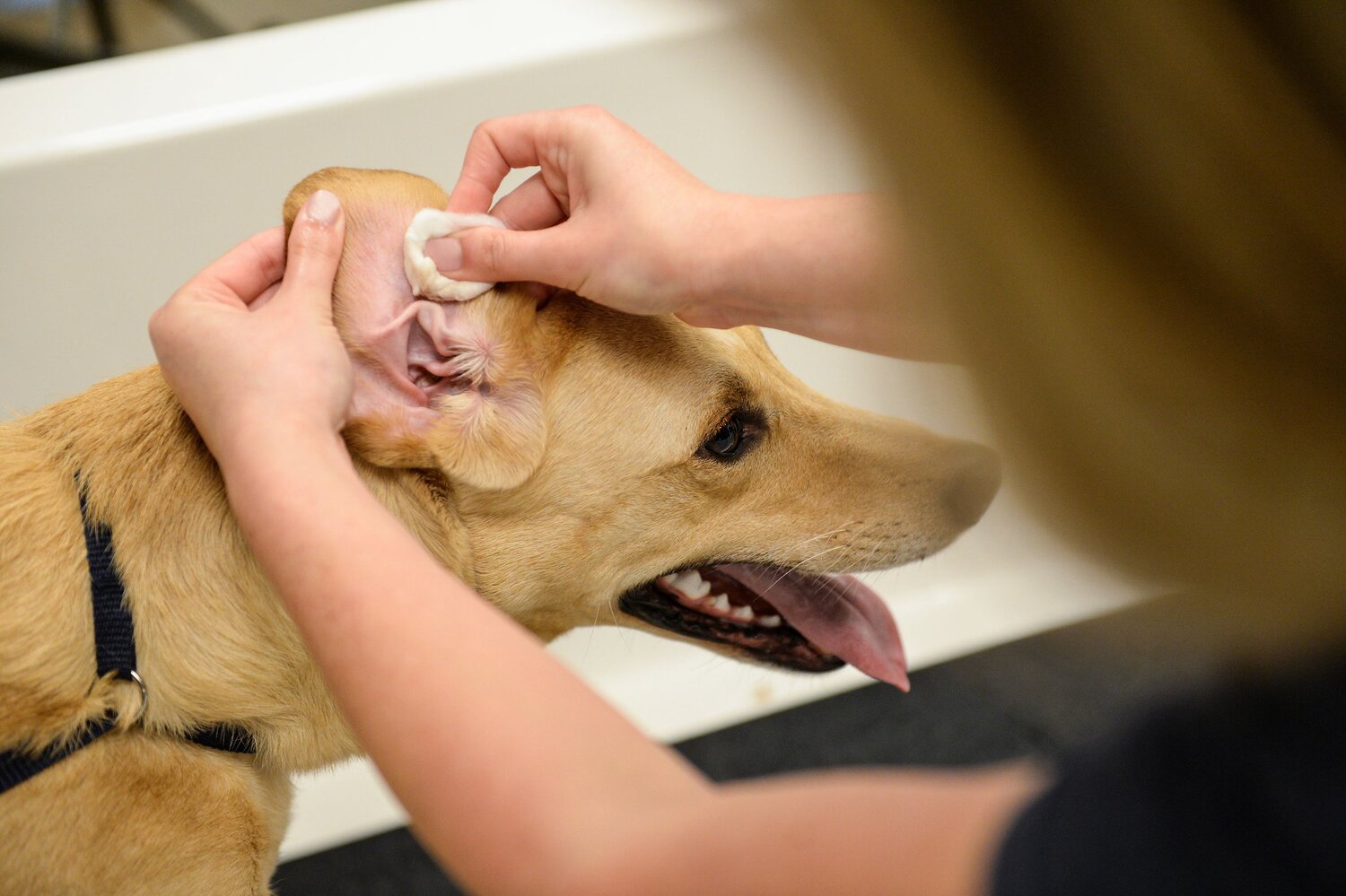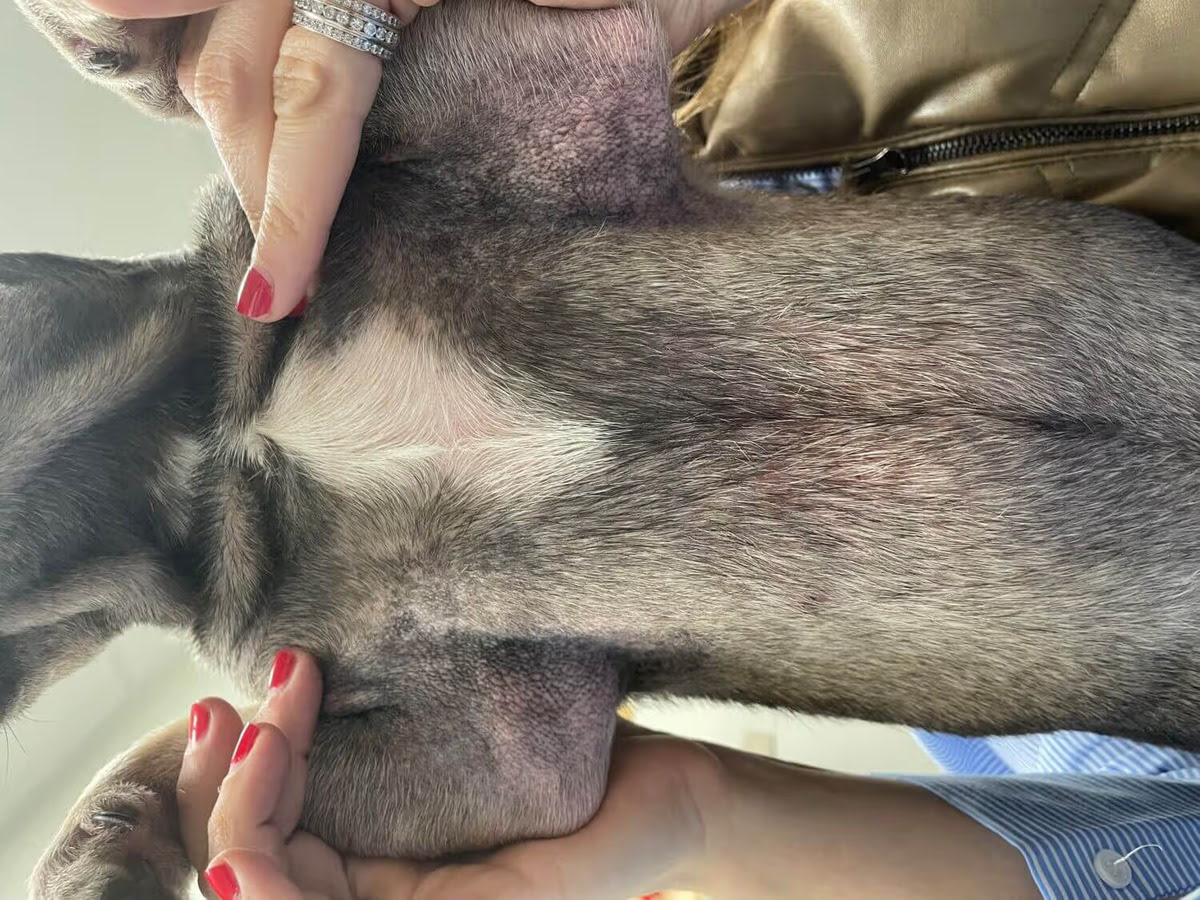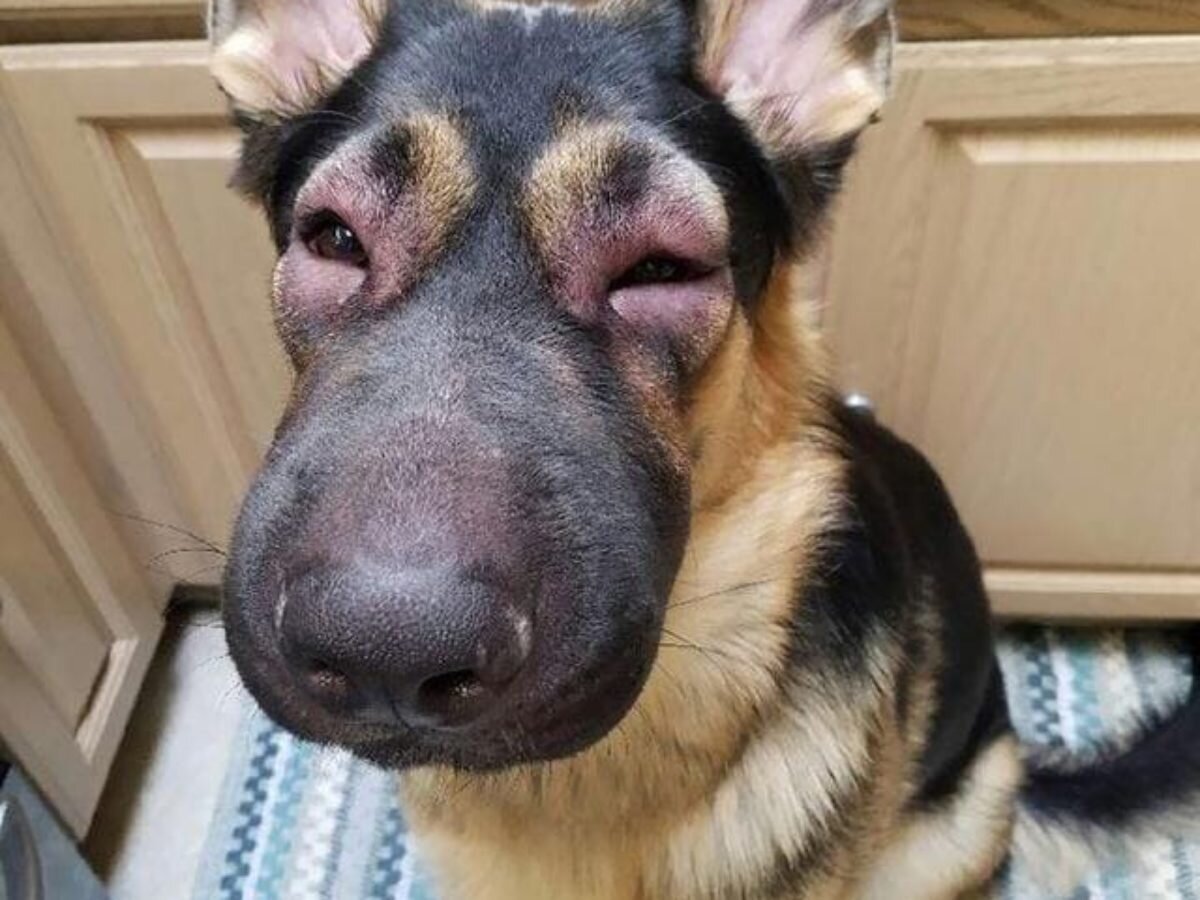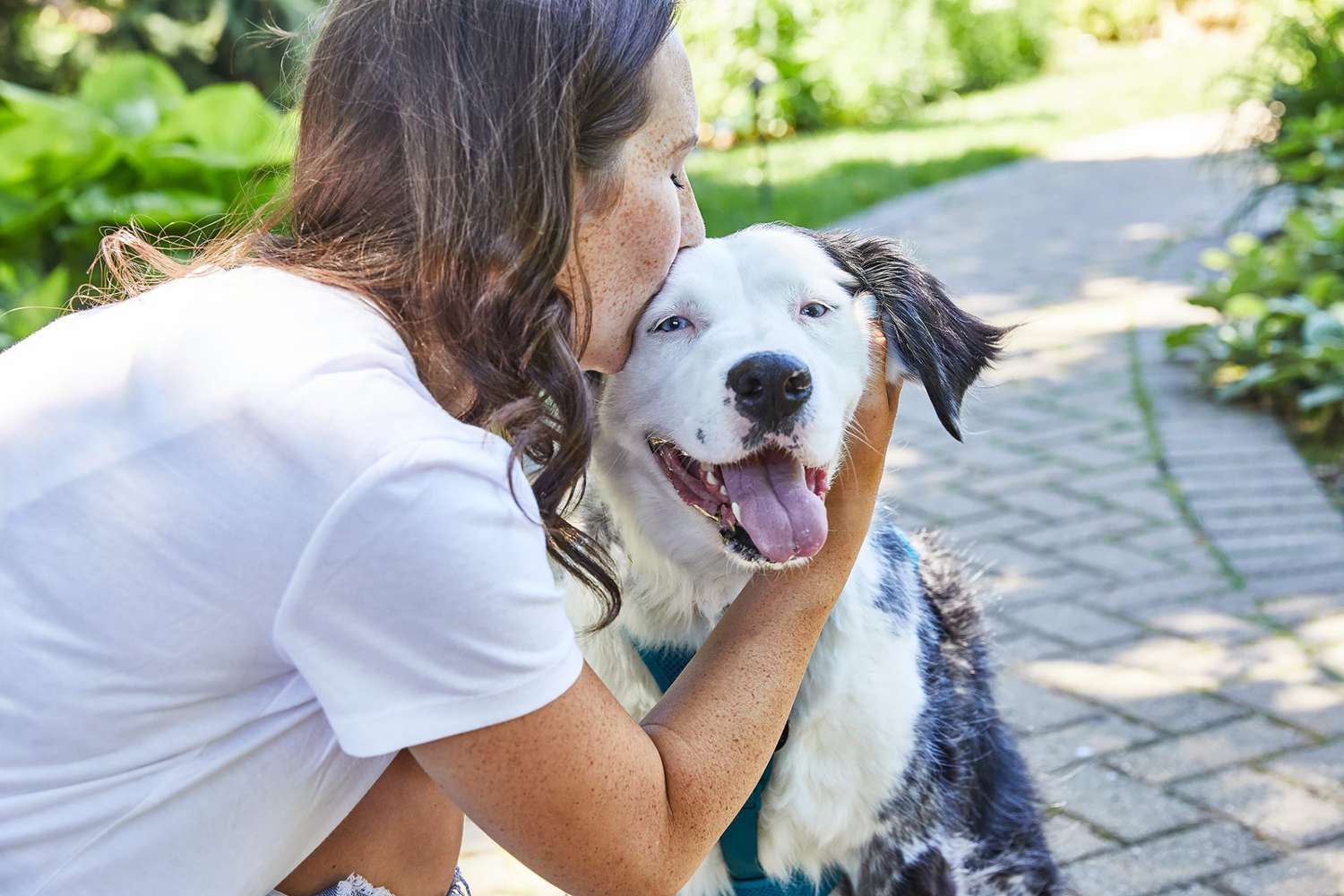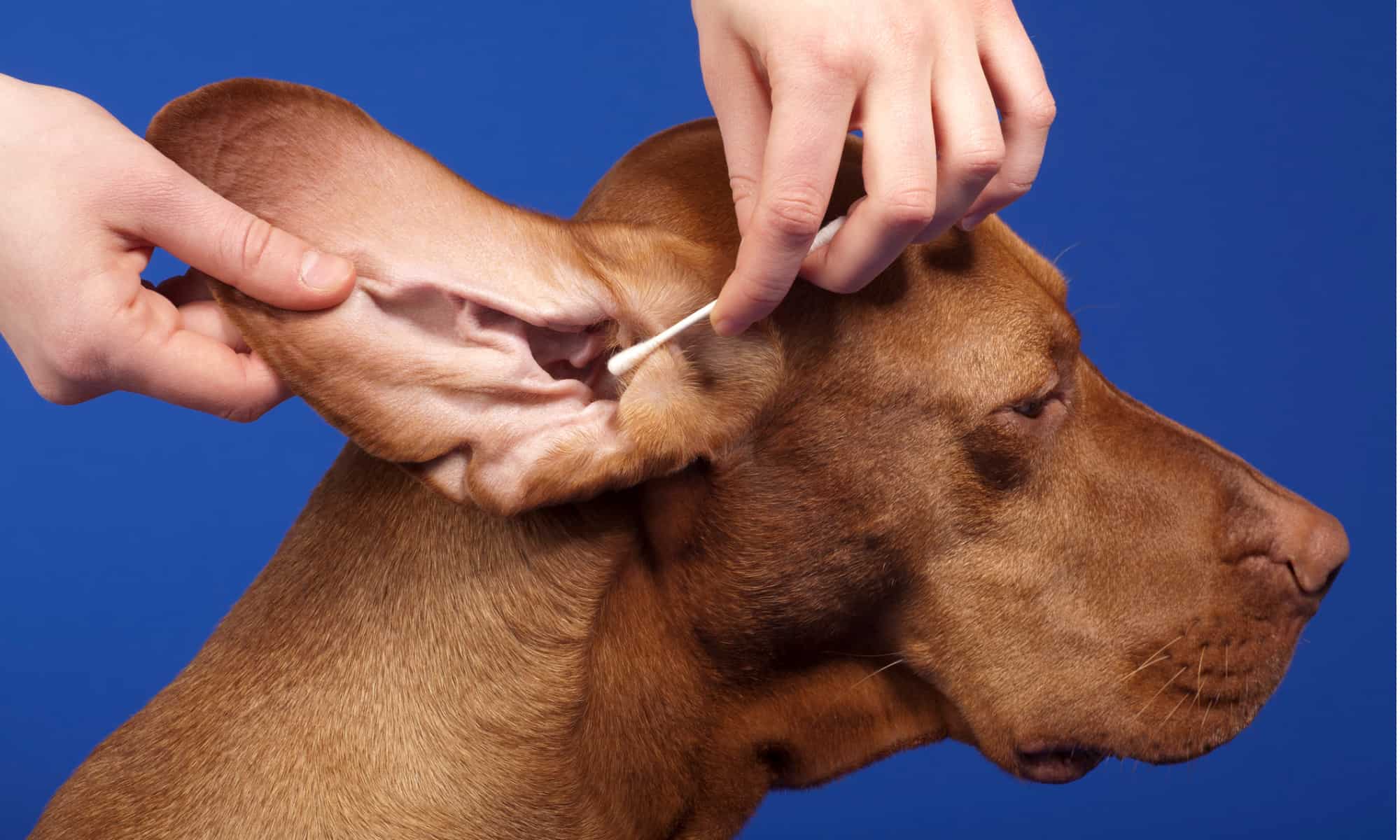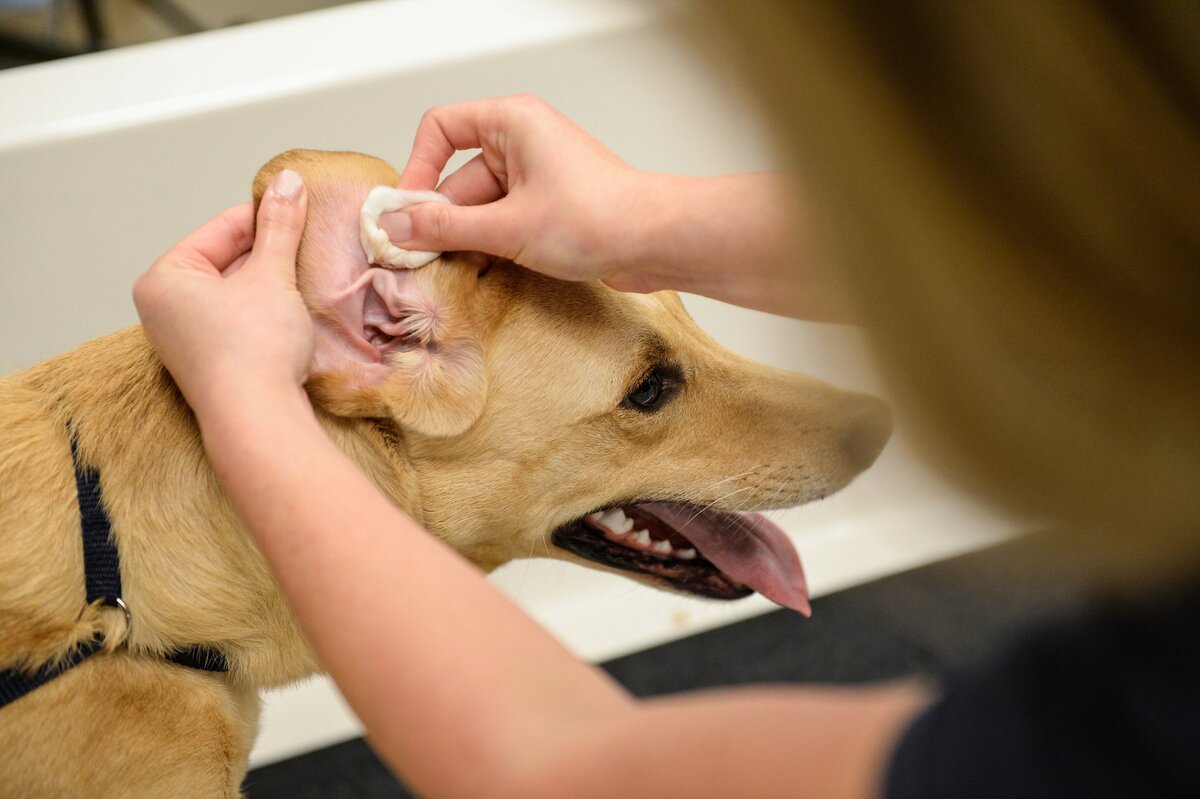Home>Health & Wellness>Common Health Issues>What To Do If A Dog Has Fleas In Its Ear


Common Health Issues
What To Do If A Dog Has Fleas In Its Ear
Published: February 14, 2024
Learn how to identify and treat fleas in your dog's ears and other common health issues. Keep your furry friend healthy and happy with our expert tips.
(Many of the links in this article redirect to a specific reviewed product. Your purchase of these products through affiliate links helps to generate commission for Pawsomeoldies.com, at no extra cost. Learn more)
Table of Contents
Introduction
Fleas are a common nuisance for dogs, and while they are often associated with infestations on the skin and fur, they can also take up residence in a dog's ears. This can be particularly distressing for our furry friends, as the sensitive nature of the ear can make the presence of fleas especially uncomfortable.
When a dog has fleas in its ear, it can lead to symptoms such as itching, scratching, head shaking, and even ear infections. As responsible pet owners, it's crucial to be vigilant about monitoring our dogs for signs of fleas in their ears and taking prompt action to address the issue.
In this article, we will explore the signs of fleas in a dog's ear, how to check for them, treatment options, and preventive measures to keep our canine companions free from these pesky parasites. By understanding how to identify, treat, and prevent fleas in a dog's ear, we can ensure the well-being and comfort of our beloved pets.
Signs of Fleas in a Dog's Ear
Identifying the presence of fleas in a dog's ear is crucial for ensuring the well-being of our furry companions. While these tiny parasites may not always be visible to the naked eye, there are several signs that can indicate their presence in a dog's ear.
-
Excessive Scratching and Head Shaking: One of the most common signs of fleas in a dog's ear is excessive scratching or head shaking. If you notice your dog repeatedly scratching at its ears or vigorously shaking its head, it could be a clear indication of discomfort caused by fleas.
-
Redness and Irritation: Flea bites can cause redness, irritation, and inflammation in a dog's ear. Check for any signs of redness or unusual sensitivity around the ear area, as this could be a result of flea activity.
-
Presence of Dark Debris: Fleas and their droppings may appear as dark, coffee ground-like debris in a dog's ear. This can be a telltale sign of a flea infestation, especially when accompanied by other symptoms such as itching and discomfort.
-
Foul Odor: In some cases, the presence of fleas in a dog's ear can lead to a foul odor emanating from the ear canal. If you notice an unusual smell coming from your dog's ear, it's essential to investigate further for potential flea infestation.
-
Visible Fleas or Eggs: While less common, it is possible to visually spot fleas or their eggs in a dog's ear. Carefully inspect the ear canal and surrounding areas for any signs of fleas or their tiny white eggs, which may resemble grains of salt.
By remaining vigilant and attentive to these signs, pet owners can promptly address the presence of fleas in their dog's ear, alleviating discomfort and preventing potential complications such as ear infections. Early detection and intervention are key to ensuring the health and well-being of our canine companions.
How to Check for Fleas in a Dog's Ear
Checking for fleas in a dog's ear requires a systematic and thorough approach to ensure that any potential infestation is identified and addressed effectively. Here are the steps to follow when examining a dog's ear for fleas:
-
Gather Necessary Supplies: Before beginning the examination, gather a few essential supplies, including a pair of gloves, a magnifying glass or flashlight, and a clean, soft cloth. These items will aid in the inspection process and help ensure a comprehensive assessment.
-
Create a Calm Environment: It's important to create a calm and relaxed environment for the dog before attempting to check its ears. This can be achieved by providing gentle reassurance and using soothing tones to minimize any anxiety or discomfort.
-
Inspect the Outer Ear: Start by carefully examining the outer ear for any visible signs of fleas or debris. Look for dark, coffee ground-like particles, which may indicate the presence of fleas or their droppings. Use a magnifying glass or flashlight to aid in the detection of tiny particles.
-
Examine the Ear Canal: Gently lift the dog's ear flap and examine the ear canal using a magnifying glass or flashlight. Look for any redness, irritation, or unusual discharge, as these can be indicative of flea activity. Take note of any unusual odor emanating from the ear, as this can also signal a potential flea infestation.
-
Check for Movement: While examining the ear canal, observe for any signs of movement, which may indicate the presence of fleas. Fleas are agile and may attempt to evade detection by moving quickly within the ear canal. Patience and keen observation are essential during this step.
-
Use Gloves for Safety: When conducting a close inspection of the ear, it's advisable to wear gloves to ensure personal hygiene and safety. This precaution can help prevent the transfer of any potential parasites or irritants to the examiner.
-
Clean and Comfort the Dog: After completing the examination, gently clean the dog's ears with a soft, clean cloth to remove any visible debris or discharge. Providing comfort and reassurance to the dog after the inspection is essential to maintain a positive and trusting relationship.
By following these steps, pet owners can effectively check for fleas in a dog's ear and take appropriate measures if an infestation is detected. Regular monitoring and proactive care are essential for safeguarding the well-being of our canine companions and ensuring their comfort and health.
Treatment Options for Fleas in a Dog's Ear
When it comes to addressing fleas in a dog's ear, prompt and effective treatment is essential to alleviate discomfort and prevent potential complications. Here are several treatment options that can be employed to combat fleas in a dog's ear:
-
Topical Flea Treatments: Topical flea treatments, such as spot-on solutions or sprays specifically formulated for dogs, can be applied to the affected dog's ear. These treatments are designed to kill fleas on contact and provide residual protection against reinfestation. It's important to use products that are safe for use in the ear area and to follow the manufacturer's instructions carefully.
-
Medicated Ear Drops: Medicated ear drops prescribed by a veterinarian can be an effective way to combat fleas in a dog's ear. These drops are formulated to target fleas and soothe any irritation or inflammation caused by their presence. It's crucial to administer the ear drops as directed by the veterinarian and to complete the full course of treatment for optimal results.
-
Oral Flea Medications: Oral flea medications, such as chewable tablets or flavored pills, can provide systemic protection against fleas throughout the dog's body, including the ears. These medications work by circulating in the dog's bloodstream and killing fleas when they feed on the dog. Consultation with a veterinarian is necessary to determine the most suitable oral flea medication for the dog's specific needs.
-
Cleaning and Maintenance: Thoroughly cleaning the dog's ears with a veterinarian-recommended ear cleaning solution can help remove debris, flea droppings, and any residual fleas. Regular ear maintenance, as advised by the veterinarian, can help prevent future flea infestations and maintain ear health.
-
Environmental Control: In addition to treating the dog, it's important to address the flea infestation in the dog's environment. This may involve washing the dog's bedding, vacuuming the living areas, and using flea control products in the home to eliminate fleas and prevent reinfestation.
-
Consultation with a Veterinarian: It's crucial to seek professional guidance from a veterinarian when dealing with fleas in a dog's ear. The veterinarian can provide a comprehensive assessment of the dog's condition, recommend appropriate treatment options, and ensure that the chosen treatments are safe and effective for the dog.
By employing these treatment options in a comprehensive and diligent manner, pet owners can effectively combat fleas in a dog's ear and provide relief to their canine companions. It's important to prioritize the well-being and comfort of the dog while addressing flea infestations, and seeking professional veterinary care is paramount in ensuring the best possible outcome.
Preventing Fleas in a Dog's Ear
Preventing fleas in a dog's ear is a proactive approach that focuses on safeguarding the well-being and comfort of our canine companions. By implementing preventive measures, pet owners can minimize the risk of flea infestations in their dog's ears and maintain a healthy environment for their pets. Here are several strategies for preventing fleas in a dog's ear:
-
Regular Grooming and Inspection: Establishing a routine grooming schedule for the dog, including regular brushing and bathing, can help prevent fleas from taking hold in the dog's fur and ears. During grooming sessions, take the opportunity to inspect the dog's ears for any signs of fleas, debris, or irritation. This proactive approach allows for early detection and intervention, reducing the likelihood of flea infestations.
-
Use of Flea Preventatives: Utilizing veterinarian-recommended flea preventatives, such as topical treatments, oral medications, or flea collars, can provide ongoing protection against fleas. These preventive products are designed to repel and kill fleas, preventing them from establishing a presence in the dog's ears and other areas of the body. Consultation with a veterinarian is essential to determine the most suitable flea preventatives for the dog's specific needs.
-
Environmental Maintenance: Maintaining a clean and flea-free environment is crucial for preventing flea infestations in a dog's ears. Regularly vacuuming the living areas, washing the dog's bedding, and using flea control products in the home can help eliminate fleas and their eggs, reducing the risk of infestation. Additionally, keeping outdoor areas where the dog spends time free from fleas can contribute to a flea-resistant environment.
-
Regular Veterinary Care: Scheduling regular check-ups with a veterinarian allows for comprehensive assessments of the dog's health, including the condition of the ears. Veterinarians can provide guidance on preventive measures, recommend suitable flea preventatives, and address any concerns related to flea control. By staying proactive with veterinary care, pet owners can stay informed about the best practices for preventing fleas in their dog's ears.
-
Education and Awareness: Educating oneself about flea prevention and ear care for dogs is essential for effective prevention. Understanding the lifecycle of fleas, their potential impact on a dog's health, and the significance of ear hygiene can empower pet owners to take proactive measures. Additionally, staying informed about new developments in flea control and ear care can contribute to a well-rounded approach to prevention.
By incorporating these preventive strategies into the care routine for our canine companions, pet owners can significantly reduce the risk of flea infestations in their dog's ears. Prioritizing preventive measures not only promotes the dog's well-being but also fosters a harmonious and comfortable living environment for both the pet and its human family.
Conclusion
In conclusion, being attentive to the signs of fleas in a dog's ear, diligently checking for their presence, and taking proactive measures to address and prevent infestations are essential components of responsible pet ownership. By recognizing the symptoms of fleas in a dog's ear, such as excessive scratching, redness, dark debris, foul odor, and visible fleas or eggs, pet owners can promptly intervene to alleviate discomfort and prevent potential complications.
The thorough examination of a dog's ear for fleas involves creating a calm environment, inspecting the outer ear and ear canal, and employing necessary safety measures. This systematic approach enables pet owners to detect and address flea infestations effectively, ensuring the well-being and comfort of their canine companions.
When it comes to treatment options, utilizing topical flea treatments, medicated ear drops, oral flea medications, and maintaining ear hygiene are crucial for combating fleas in a dog's ear. Additionally, addressing the flea infestation in the dog's environment and seeking professional guidance from a veterinarian are integral to achieving successful outcomes.
Preventive measures, including regular grooming and inspection, the use of flea preventatives, environmental maintenance, regular veterinary care, and education, play a pivotal role in minimizing the risk of flea infestations in a dog's ear. By integrating these preventive strategies into the care routine for our furry friends, pet owners can create a safe and comfortable environment that promotes the overall well-being of their beloved pets.
In essence, by understanding the signs, conducting thorough checks, employing effective treatments, and prioritizing preventive measures, pet owners can ensure that their canine companions are free from the discomfort and potential health risks associated with fleas in their ears. This proactive approach not only safeguards the health and comfort of the dog but also fosters a strong and nurturing bond between pet and owner, creating a harmonious and fulfilling companionship.
